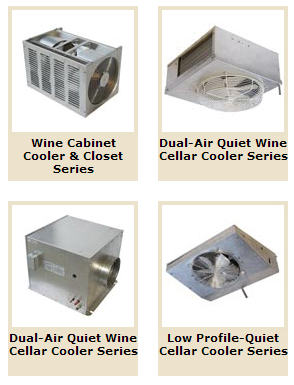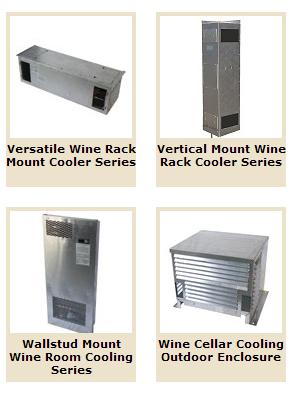Proper balance of temperature and humidity levels inside the wine cellar is essential to
protecting and preserving the quality of wines. The appropriate temperature allows wines to mature nicely, while the right amount of humidity keeps the cork in good condition.
Wine cellar cooling systems are designed to control and regulate the climate inside the wine storage room. These cooling units help maintain the temperature between 50 and 57 degrees Fahrenheit and humidity within 50% – 60%.
Effective wine cellar cooling units should be able to stabilize the wine cellar environment with less interference and minimum energy consumption. Installing proper insulation and vapor barriers in the surrounding walls is required in order to influence the efficiency and consistency of wine cellar cooling systems.
There are different types of wine cellar cooling units on the market that can meet various requirements and style. Each cooling unit has its own unique features and capacities, and offers an array of installation options. The three types of wine cellar cooling systems are self-contained through the wall units, split systems, and ducted units.
Self-contained Through the Wall Cooling Units
Self-contained through the wall wine cellar cooling systems contain both the evaporator coil and compressor in one compartment. Their function is similar to that of a window air conditioning unit: cool air is supplied into the wine cellar while hot air is exhausted into an adjacent room that is well-ventilated.
However, it should be noted here that a window air conditioning unit is similar in look and construction but it is not the same as a self-contained through the wall wine cellar cooling unit. This means that using a regular window air conditioning unit will be very detrimental to your wine collection and will probably end up ruining the whole collection.
Through the wall wine cellar cooling systems are the least expensive of all climate control units. These wine cellar cooling systems are space efficient because they are mounted on the wall, and they also provide ease of installation. The downside of using self-contained through the wall cooling units is that they operate noisily, which can disrupt the aging process of your wines.
Split System Wine Cellar Cooling Units
Split systems come in ducted or ductless models. They are named as such because they consist of two separate components: one houses the evaporator coil and the other includes the compressor, condensing fan, and coil. Both components are connected together via refrigeration lines.
The evaporator coil is installed in the wine cellar, while the condenser is placed in the attic, mechanical room, basement, or outdoors. If installed outdoors, the cooling system would require an outdoor kit to protect it against harmful weather elements. This cooling unit offers quiet operation and numerous installation options, because it can be ducted from up to 50 feet away.
Ducted Wine Cellar Cooling System
A ducted cooling system is a stand-alone unit in the sense that the evaporator coil and compressor are contained in the same housing. But unlike through the wall systems, this cooling unit can be ducted a few feet away, removing noise and vibration within the wine storage area.
This type of cooling system also saves more space for wine storage. Venting ducts are used to introduce cold air into the wine cellar and expel warm air outside.
Factors to Consider When Choosing a Wine Cellar Cooling Unit
Important factors that need to be considered when choosing a wine cellar cooling unit are the location and dimensions of the wine cellar, intended number of wine bottles, the racking system used, the type of glass door and window used, and the amount of insulation.
Dual paned glass door is recommended to prevent condensation. Take note that thick glass is not the same as dual pane. If the room is not sealed properly single pane could get condensation on the glass.
Consulting with professional wine cellar experts is highly recommended, since they can help determine the cooling system that is well-suited to your needs and requirements. Check out US Cellar Systems website at http://www.winecellarrefrigerationsystems.com/ to view their wine cellar cooling systems and ask for assitance.
You can also read this blog posts to learn more:






